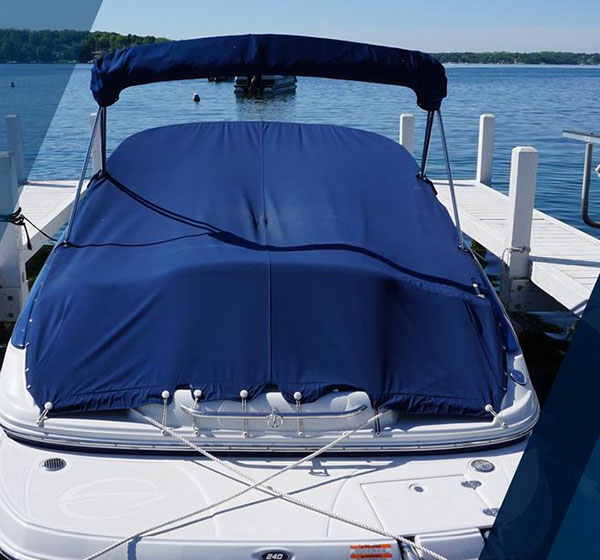Mercury Report
 Choosing a boat cover
Choosing a boat cover
Whether you bought your boat a week ago, a year ago or a decade ago, one thing is for sure: You want to keep it as well-protected as possible.
Keeping a boat under cover means soft goods such as seat cushions and canvas will last longer, the boat’s shiny finish will stay shiny longer and the boat will be cleaner every time you use it. Plus, a boat represents a major financial outlay for most of us. Keeping your boat under a cover and protected from the wind and weather will help maintain its value. But, how will you know which boat cover is the best to choose?
Boat Cover Materials
Your main fabric options when choosing a boat cover are vinyl, polyester and acrylic. Vinyl covers have the advantage of being waterproof, but there’s a big downside in that they don’t breathe. This can lead to mold and mildew issues, so you don’t see many vinyl boat covers on the market. But you do see some, and they can get the job done as long as they’re well-vented. Polyester and acrylic are much more common. Both are water-resistant (though they aren’t 100% waterproof), both breathe and both offer good strength. As a general rule, polyester is stronger coming out of the box, but there’s a catch: It weakens more quickly than acrylic does with age and exposure. In an exposed environment where a polyester cover provides a useable life span of five to seven years, an acrylic cover will likely last more like seven to 10 years.
The bottom line? If your boat is stored somewhere that the cover itself isn’t subjected too much weathering, or if it’s kept outdoors and you don’t mind replacing the cover after five or so years, polyester is probably the right pick. But if the cover will be constantly subjected to the elements and you want it to last as long as possible, getting acrylic is a better move.
Custom Boat Covers Versus Generic Covers
The trickiest part of buying a boat cover is finding one that fits right, which means considering a custom cover versus the generic variety. Custom boat covers are generally fitted to specific boat models and provide the best fit possible. However, there are downsides to going with a custom cover, starting with cost because they tend to be significantly more expensive than generic covers. And that’s if you can find one in the first place. Because so many different make and model boats are out there, custom cover manufacturers generally make their patterns only for the most popular models. And since boat manufacturers often retire old models and come out with new ones every few years, there can be a big difference between the covers needed to fit a 2020 model versus a 2021 model.
Generic boat covers are far less expensive and much more likely to fit a boat that’s from a lesser-known brand or an older model. Of course, you can’t expect a perfect fit. The trick when picking one out is to err on the large side as opposed to getting a cover that’s too small. Boat covers that are a hair oversized can be drawn tight with straps, ropes and bungee cords, but those that are too small will simply never fit.
Boat Cover Cleaning and Care
Regardless of the material or type of cover you choose, caring for it properly will greatly extend its useful lifetime. Keeping the material clean will prevent staining and mildew growth. Like many fabrics, the material used to make most boat covers is simple to clean by gently scrubbing with a soft-bristle brush, water and a mild soap (dish soap works fine). If stubborn stains have set in, try soaking the cover before lightly scrubbing it again.
Cleaning those covers is easy enough, but what really counts is what you do next. Boat covers need to be allowed to air-dry (don’t machine-dry) before stowing them away. Every few seasons it helps to retreat the fabric with a protectant, too. Different manufacturers recommend different treatments, so it’s best to find out what they suggest using before you start spraying down the fabric. And there are a few “don’ts” regarding boat cover cleaning that everyone needs to keep in mind: Don’t power-wash them, don’t use harsh cleaners and don’t have a boat cover dry-cleaned.
Check out this Quick Tip blog and video for a slick way to get your boat cover on and off with minimal effort. Then choose the best cover for your boat and rest assured your investment is safe under its protected canopy.